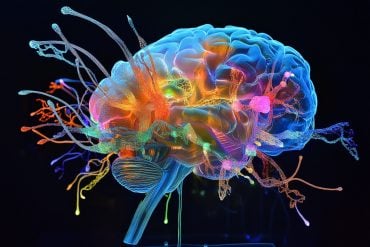Summary: Researchers made a breakthrough in reversing hearing loss in mice. By targeting the inactive Spns2 gene and activating it using a specific enzyme, the team successfully restored the mice’s hearing in low and middle frequency ranges.
This exciting development suggests the potential for reversing certain types of hearing impairments caused by reduced gene activity in humans. With hearing loss linked to conditions like dementia, depression, and cognitive decline in the elderly, these findings could pave the way for innovative treatments in the future.
Key Facts:
- The research targeted the defective Spns2 gene in mice, activating it with a special enzyme, which led to restored hearing in low and middle frequencies.
- The positive effects of the gene activation were most potent when applied to younger mice, showing diminishing benefits as the mice aged.
- The success of this study ignites hope for similar treatments in humans, potentially revolutionizing how we address hearing loss and related complications.
Source: King’s College London
New research from The Institute of Psychiatry, Psychology & Neuroscience (IoPPN) at King’s College London has successfully reversed hearing loss in mice.
The research, published in Proceedings of the National Academy of Sciences, used a genetic approach to fix deafness in mice with a defective Spns2 gene, restoring their hearing abilities in low and middle frequency ranges.

Researchers say this proof-of-concept study suggests that hearing impairment resulting from reduced gene activity may be reversible.
Over half of adults in their 70s experience significant hearing loss. Impaired hearing is associated with an increased likelihood of experiencing depression and cognitive decline, as well as being a major predictor of dementia.
While hearing aids and cochlear implants may be useful, they do not restore normal hearing function, and neither do they halt disease progression in the ear. There is a significant unmet need for medical approaches that slow down or reverse hearing loss.
Researchers in this study bred mice with an inactive Spns2 gene. Mice were then provided with a special enzyme at differing ages to activate the gene after which their hearing improved.
This was found to be most effective when Spns2 was activated at a young age, with the positive effects of gene activation becoming less potent the longer the researchers waited to provide the intervention.
Professor Karen Steel, Professor of Sensory Function at King’s IoPPN and the study’s senior author said, “Degenerative diseases such as progressive hearing loss are often believed to be irreversible, but we have shown that at least one type of inner ear dysfunction can be reversed.
“We used a genetic method to show this reversal as a proof-of-concept in mice, but the positive results should encourage research into methods like gene therapy or drugs to reactivate hearing in people with a similar type of hearing loss.”
Dr Elisa Martelletti, the study’s first author from King’s IoPPN said, “Seeing the once-deaf mice respond to sounds after treatment was truly thrilling. It was a pivotal moment, demonstrating the tangible potential to reverse hearing loss caused by defective genes. This groundbreaking proof-of-concept study unlocks new possibilities for future research, sparking hope for the development of treatments for hearing loss.”
Funding: This study was possible thanks to funding from the Medical Research Council, Wellcome, and from Decibel Therapeutics Inc.
About this hearing loss and genetics research news
Author: Patrick O’Brien
Source: King’s College London
Contact: Patrick O’Brien – King’s College London
Image: The image is credited to Neuroscience News
Original Research: Closed access.
“Reversal of an existing hearing loss by gene activation in Spns2 mutant mice” by Karen Steel et al. PNAS
Abstract
Reversal of an existing hearing loss by gene activation in Spns2 mutant mice
Hearing loss is highly heterogeneous, but one common form involves a failure to maintain the local ionic environment of the sensory hair cells reflected in a reduced endocochlear potential.
We used a genetic approach to ask whether this type of pathology can be reversed, using the Spns2tm1a mouse mutant known to show this defect.
By activating Spns2 gene transcription at different ages after the onset of hearing loss, we found that an existing auditory impairment can be reversed to give close to normal thresholds for an auditory brainstem response (ABR), at least at low to mid stimulus frequencies. Delaying the activation of Spns2 led to less effective recovery of ABR thresholds, suggesting that there is a critical period for intervention.
Early activation of Spns2 not only led to improvement in auditory function but also to protection of sensory hair cells from secondary degeneration.
The genetic approach we have used to establish that this type of hearing loss is in principle reversible could be extended to many other diseases using available mouse resources.






